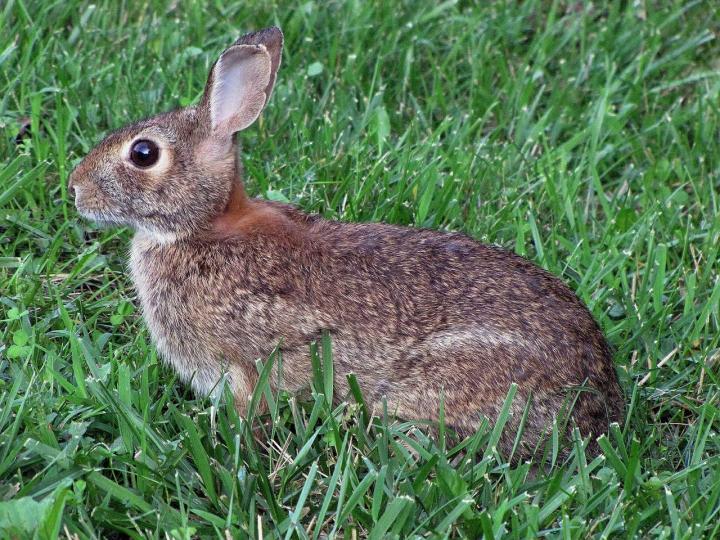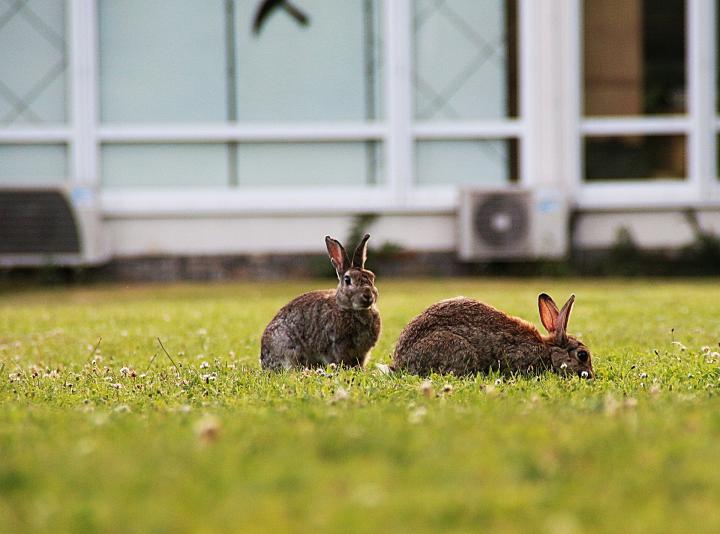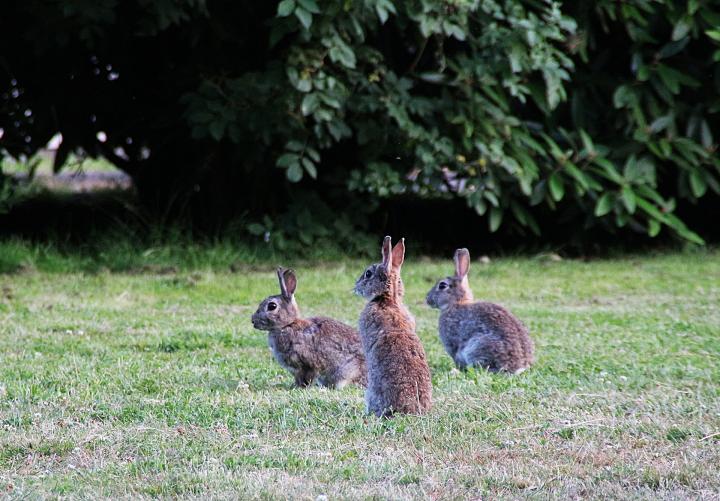How to Identify Rabbits in your Garden
Of the nine species of North American cottontail rabbits, it’s the eastern cottontail (Sylvilagus floridanus) that is our most abundant and annoying. Ranging from Boston to Boulder and south into Mexico, this bunny-about-town is rarely found in forests; preferring instead brushy fence rows, field edges, brush piles, and—you guessed it—landscaped backyards. Its fondness for flowers, vegetables, bark, and bulbs often results in pruned peppers and clipped cosmos.
Even though its nicknames are adorable (among them bunny, bunny rabbit, and cottontail), and you’ll probably want to befriend it once you see its cute ears, the eastern cottontail can be a bothersome pest. It is gray or brownish, with a short tail and big ears. It can weigh 2 to 4 pounds, be 15 to 19 inches in length, and live for 12 to 15 months. Its vocal call is almost silent, but it will emit a scream when threatened. Its famous features include a short white tail resembling a cotton ball and long, tapered ears.
For an eastern cottontail, security is a pile of brush, leaves, or another animal’s abandoned burrow. Unlike their European cousins, these rabbits do not dig intricate burrows or warrens but make due with what they find. Rabbits rarely leave their shelters in broad daylight, preferring instead early morning or evening. Like most animals, they are sensitive to the change in day length as spring approaches. For rabbits, the longer days signal the start of two things: breeding season and spring dining.
Rabbit Damage
Rabbits are voracious eaters and leave clean-cut damage. Check the leaves and stems of your plants for cleanly cut damage; insects and other pests usually leave jagged edges on damaged plants. This clean-cut damage often happens at ground level, as rabbits tend to eat the yummy green shoots of tulips and other plants.
These low mowers graze close to the ground and sniff out the first tender young shoots and crop them short. They love to munch on flowers, clover, peas, lettuce, beans, and more. Many of these plants are also the favorites of woodchucks or groundhogs, so check for burrows before deciding you have rabbit damage. Once your plants have passed the seedling stage, they are usually safe from rabbit damage.
Although bunny nibbling occurs in every season, it’s especially discouraging in the early spring when rabbits mercilessly munch the tender green shoots of plants. As a Connecticut gardener remembers, “My tulips were just poking through the snow when suddenly it looked like they’d been weed-whacked. Cut clean off! I blame the bunnies—their little paw prints were everywhere.”
 Cute, yes. But behind those eyes lies an eternal hunger!
Cute, yes. But behind those eyes lies an eternal hunger!



 Cute, yes. But behind those eyes lies an eternal hunger!
Cute, yes. But behind those eyes lies an eternal hunger!








Comments